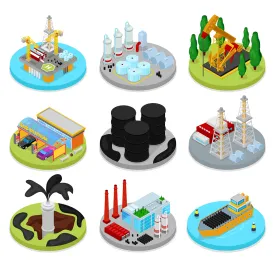On December 29, 2017, the Bureau of Safety and Environmental Enforcement (BSEE) published a proposed rule in the Federal Register, stating its intent to significantly revise provisions of the (30 CFR part 250, subpart H) to reduce “unnecessary regulatory burdens” on Outer Continental Shelf (OCS) oil and gas operators while maintaining or advancing the level of safety and environmental protection.
The Oil and Gas Production Safety Systems regulations address safety and pollution prevention equipment (SPPE), subsea safety devices and safety device testing for the production of oil and gas resources on the OCS. The Obama administration previously amended the Oil and Gas Production Safety Systems regulations in a September 7, 2016 final rule, which imposed rigorous design, testing and inspection requirements for oil and gas production safety systems and equipment used to collect and treat oil and gas from OCS leases. Most of the changes proposed in the proposed rule would amend, revise or remove regulatory requirements added by the September 2016 final rule.
Key provisions of the proposed rule include:
Elimination of Third Party SPPE Certification
The proposed rule would remove the requirement in 30 CFR §250.802(c)(1) for operators to obtain certification from an independent third party verifying that SPPE equipment will function “as designed under the conditions to which it may be exposed.” BSEE states that the current provision—promulgated in the September 2016 rule—imposes too strict of a burden on operators because it requires equipment be certified for “the most extreme conditions.” Instead, the newly proposed language would only require the equipment to meet “original equipment manufacturer specifications and acceptance criteria.” Additionally, the proposed rule notes that industry standards—incorporated by reference in the regulations—already provide for independent testing to ensure devices will function as designed.
Reduction in Safety System Design and Installation Requirements
The proposed rule would also reduce the number of documents required to be approved by a registered professional engineer (PE) and submitted to BSEE prior to installation or modification of a production safety system. The September 2016 rulemaking revised 30 CFR §250.842 to require that documentation, diagrams, and schematics associated with safety systems are approved by a PE before being submitted to BSEE. The proposed rule identifies several “less critical” documents that will not need to be approved by a PE or submitted to the agency, but that operators will still be required to maintain. BSEE cites this revision as the largest cost saving provision in the proposed rule, estimating a total savings of $162 million over 10 years.
Additional Reporting, Inspection, and Construction Revisions
In addition to the changes noted above, the proposed rule would:
- Eliminate a requirement for operators to seek approval to use a pressure safety low sensor with a time delay of greater than 45 seconds. Instead, operators would be required to monitor sensors with a delay in excess of 45 seconds according to the existing monitoring regulations;
- Eliminate the requirement for the fire tube to be removed during heater inspections if the operator identifies a more appropriate method for inspection;
- Require approval of safety systems and devices associated with temporary quarters regardless of where the temporary quarters are located. Under current regulations, operators must obtain approval for temporary quarters only if they are to be installed in “production processing areas or other classified areas”;
- Revise operator requirements for atmospheric vessels to (1) include atmospheric vessels in applicable drawings if connected to process systems containing a class I liquid, and (2) limit to newly installed equipment the requirement that level safety high sensors detect the level in the oil bucket;
- Expressly add gas lift shut down valves (GLSDVs) to the list of SPPE. BSEE classifies this revision as a clarification, stating that the GLSDVs are already subject to 30 CFR §250.801 requirements; and
- Specify that operators must shut in the production on any facility that “is impacted or that will potentially be impacted by an emergency situation” for dry tree (surface) and subsea tree production systems. The current regulations include several examples of potential emergencies that would require operators to shut in production. These revisions would clarify that the provided examples do not represent an exhaustive list and operators must make a determination based on the situation.
Additional Areas for Comment
Lastly, BSEE seeks comment on a number of potential revisions to 30 CFR part 250 that would:
- Allow operators to use existing inventory of boarding shutdown valves without certification if they meet the other requirements prescribed in 30 CFR §250.802;
- Revise language to clarify what constitutes a “failure” for reporting procedures;
- Provide operators additional time to implement production platform piping systems standards;
- Determine whether the definition of Best Available and Safest Technology (BAST) set forth in the September 2016 final rule adequately reflects the statutory mandate; and
- Clarify when a failure analysis is required under 30 CFR §250.803.
The comment period for the proposed rule ends on January 29, 2018.
Issuance of the proposed rule follows the U.S. Department of the Interior’s (DOI) decision on December 7, 2017, to suspend a review of BSEE’s offshore oil and gas operations inspection program being conducted by the National Academies of Sciences, Engineering, and Medicine. The study sought to provide recommendations to BSEE regarding inspection goals, risk prioritization, the role of third parties in determining compliance with regulatory requirements, and the appropriate role of remote monitoring and other safety-enhancing technologies in inspections. The directive suspending the study indicates that the DOI will issue a decision within 90 days to either resume the project or terminate the contract to perform the study.



 />i
/>i
